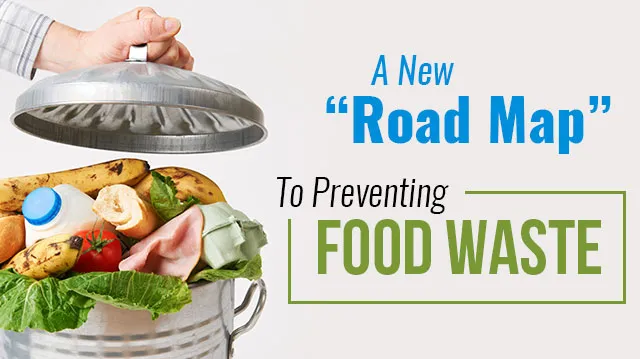In the United States, food waste is a gargantuan issue. Individuals and businesses throw away up to 40 percent of the food we produce in this country! Much of this food ends up right in our nation’s landfills.
So how much food are we talking? According to NPR, “Each year, an estimated 133 billion pounds of food that farmers grow never makes it to our plates. That’s enough to fill 44 skyscrapers.”
The dire need for the US to cut down on food waste has not been lost on our government. President Obama has set a goal of cutting food waste in half by the year 2030. It’s a lofty goal, but one that would benefit our environment — and America’s people — greatly.
To aid in this goal, ReFED, a coalition of environmental, public health and business organizations, has published a report outlining a “road map” to reduce food waste over the next 10 years.
On its website, ReFED states: “Today, the United States spends $218 billion a year growing, processing, transporting, and disposing of food that is never eaten. ReFED was formed to build a different future, where food waste prevention is recognized as an untapped strategy that can save resources, create jobs, alleviate hunger, conserve water, and reduce greenhouse gas emissions — all while stimulating a new multi-billion dollar market opportunity.”
Sarah Vared, ReFED’s interim director, adds, “Reducing food waste is one of the most tangible ways we can all help contribute to a healthier planet. It [the road map] identifies actions that can be taken today.”
This road map contains 27 suggestions in total. Some of the big ones include standardized date labeling, centralized composting, consumer education campaigns, packaging adjustments, donation matching software, standardized donation regulation and spoilage prevention packaging.
The road map prioritizes the prevention of food waste first and foremost. If food wasn’t thrown away in the first place, much of our waste would be reduced. Hence, the importance of standardized date labeling and consumer education. For example, the “sell by” dates on many foods today are confusing and do not indicate when foods actually go bad.
ReFED explains: “Changes to date labels require little upfront investment from businesses and can be enacted unilaterally by large food companies to reduce consumer confusion. The best path forward is for a voluntary agreement of manufacturers to implement consistent language.”

Dana Gunders, a Natural Resources Defense Council (NRDC) staff scientist who worked on the report, writes: “The Roadmap gives us an excellent place to start. It shows that the president’s food waste goals are not only achievable, but meeting them will save billions of dollars every year. When we waste food, we waste all of the resources it takes to bring it to our plates — from money to farmland, energy and water.”
We hope that this plan is enacted, because wasting 40 percent of the food we produce as a nation is simply egregious and unacceptable. In the meantime, there are a few things you can do to cut down on food waste in your own home:
- Plan your meals before you shop. Write down what foods you need for each meal and how much.
- When shopping for groceries, buy only what you need. Stocking up on produce and fresh food may sound appealing, but it’s not so appealing if it ends up in the trash.
- Buy from local farmers markets — or grow your own food — whenever possible. This cuts down on the costs and carbon emissions of having food transported across the country (or the world) to end up on grocery store shelves.
- If you have leftover meals, or foods that you cannot use, see if you can give them to a neighbor. Or host a neighborhood potluck!
- Start a home compost pile.
Do you have any other ideas for reducing food waste in your home and community? If so, please share!
—Tanya Rakhmilevich
Tanya is a writer at The Alternative Daily with a passion for meditation, music, poetry, and overall creative and active living. She has a special interest in exploring traditional Eastern remedies and superfoods from around the globe, and enjoys spending time immersed in nature.
Sources:
http://www.takepart.com/article/2016/03/10/food-waste-roadmap
http://www.npr.org/sections/thesalt/2016/03/15/470434247/these-27-solutions-could-help-the-u-s-slash-food-waste
http://www.refed.com
